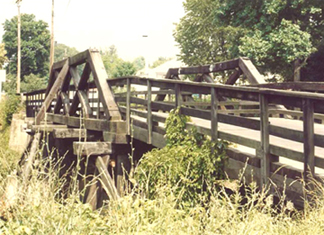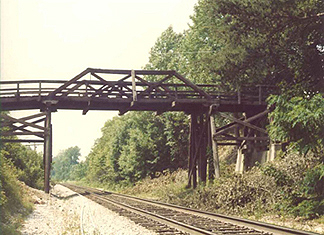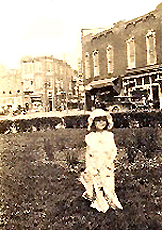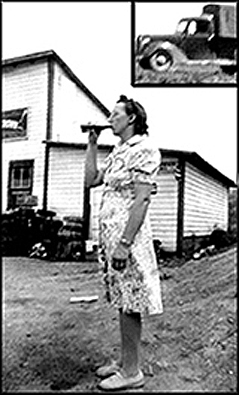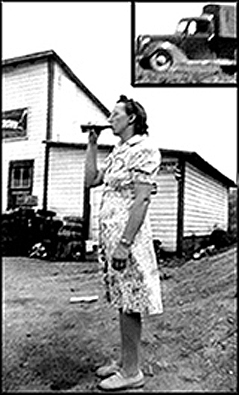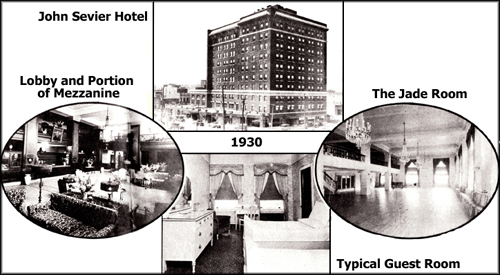I recall a delightful Saturday morning children’s program over WJHL radio from about 1951 to 1953 titled “The Adventures of Princess Pet.” The sponsor was Pet Dairy Products, a Johnson City based business that began operation in 1929 at 106 S. Boone Street. The company produced 111 delightful 15-minute episodes.
I attribute my attraction for the radio series to my fondness for Brown Mules, vanilla ice cream bars coated with chocolate, and Brown Bears, solid chocolate ice milk bars. Both were produced on a splinterless wooden stick. I favored the stubborn hybrid work animal over the shaggy carnivorous mammal but eagerly wolfed down both. The frozen delights each cost a nickel – half of my weekly allowance.
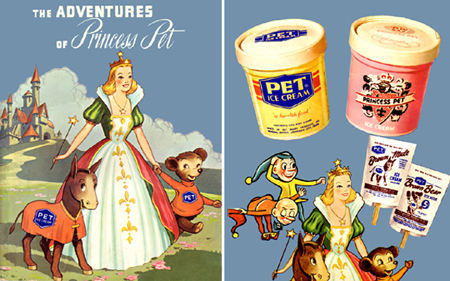
In addition to the weekly radio programs, the company published two 36-page, eight-chapter, color/b&w booklets titled “The Adventures of Princess Pet,” Volumes 1 and 2. Each volume contained a list of the “Royal Commands of Princess Pet” to her youthful listening audience, offering one per month such as always tell the truth, bring home a good report card, keep your room neat, look both ways before crossing a street; and regularly attend Sunday School.
An introductory page presented a short synopsis of the plot: “This is the story of some of the strange and wonderful things that happen in the beautiful Kingdom of Prince Pet in the Land of the Ice Cream Star. Nearby lies the Black Forest, a wicked, wicked place. The ruler of the forest is the Wicked Duke, who many years ago placed a curse upon the forest because Princess Pet’s mother, the Queen, refused to become his bride. If even the tiniest shadow of Black Forest falls upon you, you become enchanted.”
The most dazzling sketch in Vol. 1 was a full color page offering a panoramic view of Ice Cream Star. The text offered a colorful description of the frozen fantasyland: “Layers of soft, filmy clouds floated and sparkled in the warm sunlight. Everywhere around them were lakes of rich, fresh cream, rivers of bubbling chocolate and mound after mound of cherries, nuts, pineapples, peaches, coconuts and strawberries.”
The tiny elf-like workers, dressed in bright jackets, were “hustling and working everywhere – churning and turning, hopping and chopping, icing and slicing – making delicious Pet Ice Cream.”
Vol. 1 concluded in a “they lived happily ever after” fashion: “From high up in the sky over the castle, the Ice Cream Star looked down and smiled a special smile, for it was plain to see, Goodness would live forever in the Kingdom of Princess Pet.” Storylines from the series include “A Dragon Has Been Slain,” “Ice Cream Star Seeks Yellow Forest,” “Evil Duke Plans to Get the Golden Thread,” “Pet Brown Mule and Pet Brown Bear are Hiding” and “The Princess Dreams of Prince Gallant.”
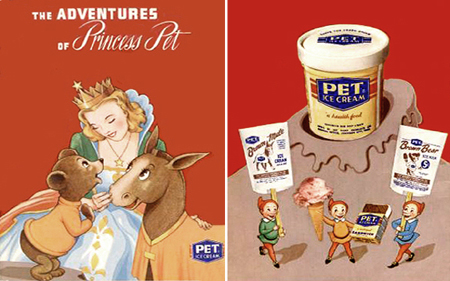
The plot for Volume 2 entails Brown Bear and Brown Mule helping Princess Pet when some evil characters try to harm her. On one page, her majesty bestows membership in her Regal Court upon a little boy.
Youngsters like me eagerly tuned their Bakelite radios to the next broadcast each Saturday morning, at the sound of the clanging bottles, to follow the antics of Ms. Pet and her fantasized court. Situations always seemed to turn out right for the good guys and wrong for the evil ones, a condition all children fervently demanded.
If you have even a hint of memory of this long-ago radio program, please drop me a note and share it with me.

